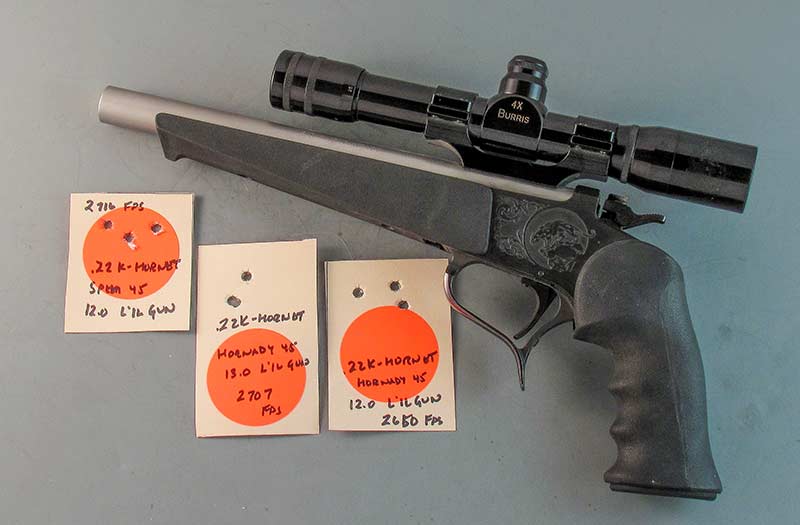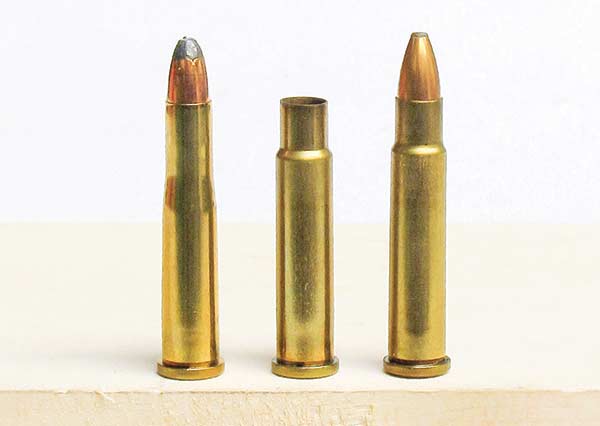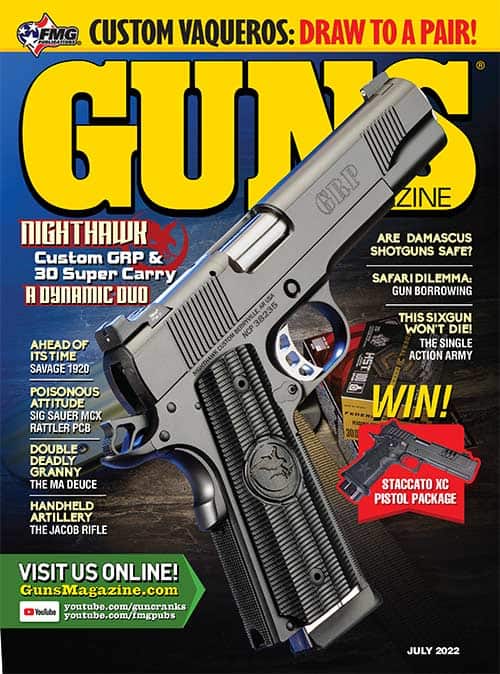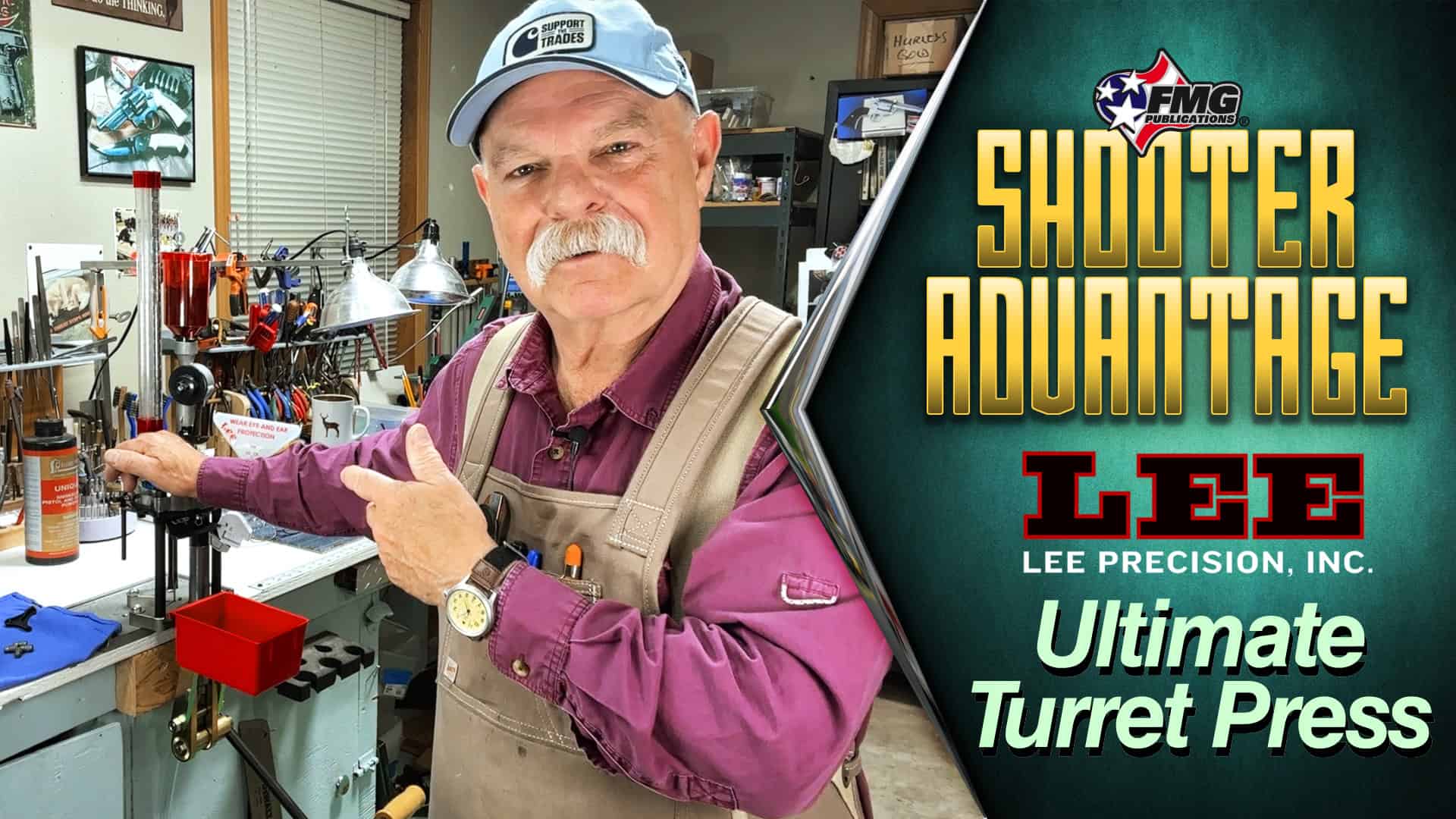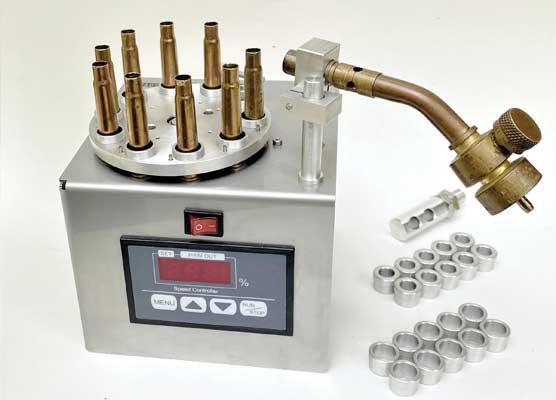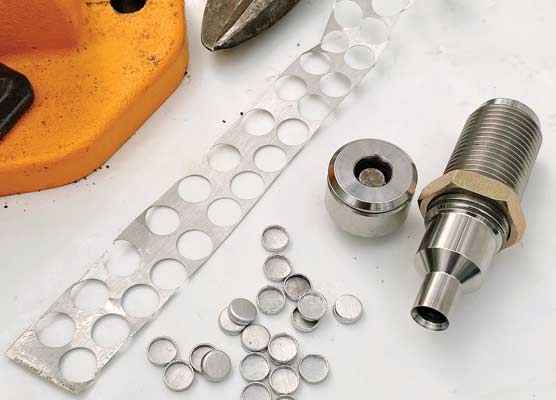Hornet Handguns
Beware The Sting!
Today we have a long, long list of repeating rifles available chambered in cartridges designed for long-range varmints and small game hunting. A century ago this was not the case and the only readily available combination in a repeating rifle was the .25-20 Winchester Centerfire. This cartridge began as a black powder load and was simply the .32-20 Winchester necked down to .25 caliber. However, things were about to change.
Go Faster
In the 1920s experimenters began looking to the future with one of the things they desired being a smokeless powder, long-range .22 Centerfire. One of the early seekers was Col. Townsend Whelen — “Only accurate rifles are interesting” — who happened to be assigned to Springfield Armory at the time. Using 1903 Springfield rimfire training rifles from World War I, Whelen had them converted to a new cartridge that became known as the .22 Hornet. By the early 1930s both Savage and Winchester were chambering bolt-action rifles for the Hornet. Both DuPont and Hercules developed new powders for use in the .22 Hornet and when they were able to attain 2,400 fps, the experimental powder from Hercules was given its name, which we all know now as #2400. This was in 1934 and Elmer Keith soon made this powder well-known by using it first in his Heavy .44 Special loads and then on to the .44 Magnum.
In 1940, Lysle Kilbourne, who did much of the technical data for the Lyman Reloading Manuals of the time, improved the tapered .22 Hornet case by blowing it out and giving it a pronounced shoulder. It became the K-Hornet. A third iteration of the Hornet came from Jim Harvey in 1956. Rather than developing a cartridge for a rifle, Harvey wanted a .22 Centerfire for use in a sixgun and his answer was to shorten the K-Hornet to the Harvey Kay-Chuck for use in re-chambered Smith & Wesson K-22s. In the early 1960s Smith & Wesson took that same K-22 revolver Harvey started with and aided by Remington came up with the .22 Jet, which was a milk-bottle-shaped cartridge formed from the .357 Magnum case. Harvey’s K-Hornet worked while the .22 Jet did not, at least not in a revolver chamber. Too bad the engineers in the project did not take a closer look at Harvey’s .22 centerfire.
Many rifle manufacturers have offered the .22 Hornet in their bolt actions, however, my experiments are mostly with the Hornet in the Thompson/Center Contender using one of the early 10″ octagon barrels. Hornady, Sierra and Speer all offer the 40- and 45-grain bullets the Hornet is best suited for, with some even being marked as Hornet bullets. Since this is a rifle cartridge, at least originally, reloading is accomplished with an RCBS two-die set consisting of a full-length resizing die and a seating die. One problem I run into in loading for the .22 Hornet is the fact those tiny little bullets don’t mate well with my fat fingers.
John’s Take
All of my loads for the .22 Hornet are assembled using the original Hornet powder #2400, which is now from Alliant instead of Hercules and Hodgdon’s Lil’ Gun. The final developed original rifle load may have been at 2,400 fps, however, I have no problem achieving this with either powder in a 10″ barrel as found on the Contender. Winchester’s factory 45-grain JSP clocks out at just a hair under 2,400 fps in the Contender and puts its three shots in 3/4″ at 45 yards. I get the same accuracy and a little more velocity using 10.0 grains of Lil’ Gun with the Sierra 40-grain JSP and the Hornady 45 “Bee” both with muzzle velocities right at 2,440 fps. The Speer 40-grain Spitzer shoots with the same accuracy over 9.0 grains of #2400 at 2,400 fps and 10.0 grains of Lil’ Gun at just under 2,500 fps.
The .22 Hornet barrel is an early octagon barrel while my K-Hornet is a custom 10″ Bull Barrel from SSK Industries. I much prefer the looks and balance of the heavier barrel. Forming K-Hornet brass is as simple as it gets — simply fire a Hornet in the K-Hornet chamber. In reloading the K-Hornet I use Hodgdon’s Lil’ Gun exclusively with 45-grain bullets from both Hornady and Speer. Using 13.0 grains of Lil’ Gun, muzzle velocities with both bullets are over 2,700 fps with both loads grouping well under 1″ for three shots at 45 yards. Along with this excellent accuracy, muzzle velocity is 250–300 fps faster than the original Hornet, stretching the range for cleanly taking varmints and small game a bit further. However, neither one of these are what you would call long-range cartridges and especially when using the Contender, shots at 200 yards or less are preferred.
Both the Hornets have been overshadowed for a long time by such cartridges as the .222 and .223 Remington, the .220 Swift, the .22-250 and many others. However, I find it much more satisfying shooting the Contender than a long-range rifle and in fact, not only are both my Hornets in the Contender, I also use Contenders chambered in .222 and .223. Just seems to me this is the way things should be.
